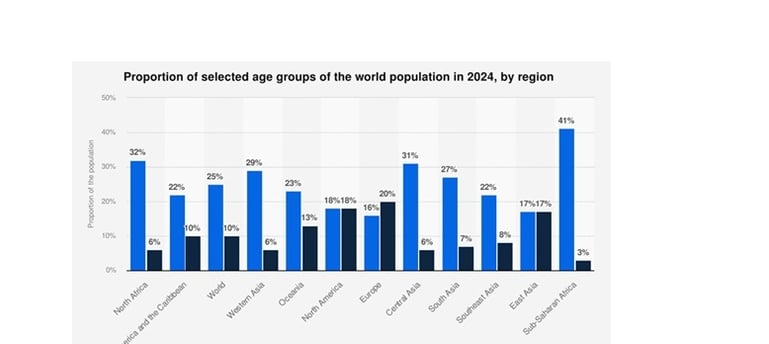Featured Product Approaches and Innovations
Today's consumer expectations are rapidly changing with technology and sustainability-focused transformations. Brands are focusing on improving the user experience by offering longer-lasting, environmentally friendly and smart solutions. In this blog post, we will explore current new product approaches. We will try to understand consumer trends and innovations by closely examining these important factors that shape the products of the future.
Arzu Güven
3/5/20253 min read


Product design and production processes are constantly evolving in line with consumer needs and technological developments. Now, not only functionality but also factors such as sustainability, personalization and digital integration are of great importance. Brands are trying to improve the user experience by offering long-lasting, flexible and smart solutions while also minimizing environmental impacts. In this article, we discuss today's prominent product approaches and innovations in the sector.
1. Price Sensitivity and Value-Oriented Shopping
The slowdown in the growth rate of the global economy and the uncertainty it faces have led users to become more price-oriented. More and more consumers are examining the value and price-performance ratio of products or services in detail by comparing them with equivalent products.
2️. Health and Hygiene
Hygienic and healthy products have become more in demand, especially after the pandemic. The integration of contactless technologies alongside antimicrobial surfaces in public products has become an important trend in product design.
3️. E-Commerce and Digital Marketing
With the spread of online shopping, how products are presented on e-commerce platforms has become important. Packaging needs to be suitable for cargo transportation. Consumers have become more attentive to packaging and portability. In addition, products need to be easily installed by the consumer.


4. Low Electricity Consumption and Energy Efficiency
In regions like Europe, energy efficiency standards are becoming increasingly stricter. In particular, the regulations set by the European Union (EU) within the scope of the “Green Deal” require design changes for products to consume less electricity. Brands that comply with these standards both reduce environmental impact and increase consumer confidence, providing a competitive advantage.
5. Use of Recycled Materials
The use of recycled and sustainable materials in products has become one of the most important ways to reduce environmental impact. The EU strategically encourages manufacturers to use certain amounts of recycled raw materials and makes it mandatory in some sectors. This transformation allows brands to achieve their sustainability goals while also making it possible to offer more environmentally friendly products to consumers.
6. Elderly Population and Accessibility
The world population is aging. The demand for products that support independent living is increasing, especially in societies like Europe, where the elderly population is increasing. Products should have larger buttons, simple and understandable interfaces, voice command systems, designs that reduce the risk of falling and slipping, etc. needs to be used.


7. Smart Products with Artificial Intelligence and Digitalization
Artificial intelligence (AI) and digitalization are radically changing the design, functionality and production processes of products. Thanks to productive artificial intelligence, products are now becoming smarter, more customizable and more efficient. AI-supported automatic design software creates more ergonomic and aesthetic products, while reducing error rates in production processes and increasing quality. Smart technologies and IoT integration make products more interactive and user-friendly in many areas, from consumer electronics to home appliances, from wearable devices to automobiles. For example, AI-supported white goods optimize energy consumption, while AI-based personal assistants offer a more efficient experience by learning user habits. These smart products, strengthened by digitalization, provide brands with a competitive advantage, while offering consumers more functional and sustainable solutions.
8. Flexible and Software-Supported Products
Products become longer-lasting with software updates as well as hardware. Thanks to remotely updateable software, devices gain new features and their performance is increased. At the same time, products that can be customized according to the needs of users offer flexible use. Examples: Smartphones, IoT devices, electric vehicles, smart home systems.
9. Water Efficiency
Consumers prefer to reduce their environmental impact and support sustainable living by turning to water-efficient products. This trend has become even more pronounced, especially with the increasing scarcity of water resources. It provides both cost savings to the consumer and reflects an environmentally friendly approach.
10. Extended Product Life and Refurbished Products
Consumers prefer products with long-lasting and modular designs. While the demand for refurbished and second-hand products is increasing, brands are also supporting sustainability by offering repairable and upgradeable products.
End-to-end support for product development and management.
novaexpert
E-mail : info@novaexpertengineering.com
Phone : +90 543 5841147
© 2025. All rights reserved.
